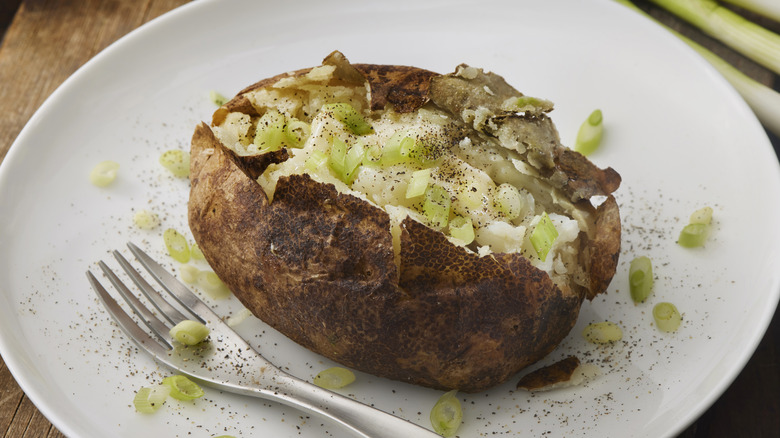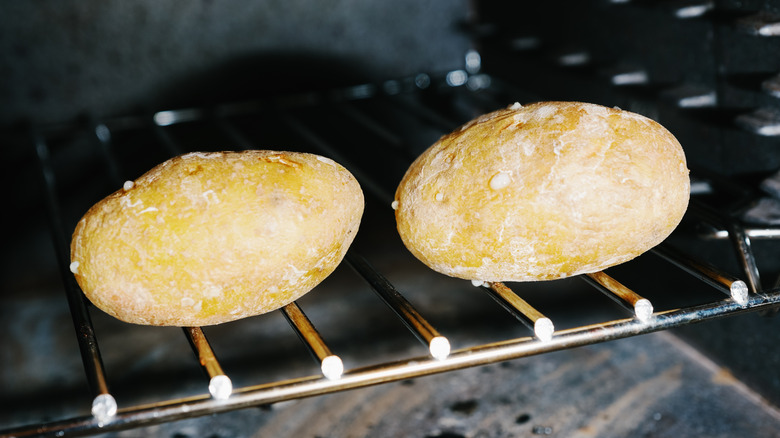A Brushing Of Butter And Salt Makes For Tastier Skins On Baked Potatoes
You might already put a spoonful or two of butter and a sprinkle of salt on the inside of a baked potato paired with other toppings like bacon, chives, or sour cream. To make the skin taste almost as delicious as the creamy flesh inside, use butter and salt on the outside of your next baked potato too. The skin of the potato is loaded with vitamins and nutrients like fiber, calcium, and potassium, so it's definitely worth eating and it might as well taste good.
The butter will make the skin crispy and golden brown to provide a mild crunch in contrast to the creaminess of the insides. It's almost like eating large loaded potato skins with a fork. Meanwhile, the salt will give some depth to the flavor of the skin and, depending on what kind you use, the ingredient will also provide a little texture. You can even add black pepper and garlic powder to the outside to achieve a restaurant-level baked potato. A drizzle of oil like avocado or olive can also achieve a crisp skin if you don't want to use butter.
Skip the aluminum foil for a crisp, buttery, and salty baked potato
You might typically wrap a baked potato in aluminum foil for a shorter cooking time, but doing so will trap moisture, meaning the skin won't get as crispy. Some home cooks swear by cooking an unwrapped baked potato directly on a baking sheet. A wire rack is another tool that can help achieve a crispy potato with a baking sheet underneath the rack to catch drippings and prevent a mess in the oven. Lather the potato with the butter and salt from the start, or let it cook plain for about 20 minutes, then remove it (careful, it's hot!), brush and season it, and return it to the oven.
It should only take 1 to 2 teaspoons of melted butter or oil for each potato, depending on the size. You can always start with a little and add more to fully coat the skin when it's time to cook. Unsalted butter is the best option because salt is already being used on its own. When it comes to the type of salt, coarse kosher salt or sea salt flakes will achieve the extra crunch we mentioned earlier, but whatever salt is already in your kitchen works.
A final tip: Poke holes in your potato before cooking and set your oven to at least 400 degrees Fahrenheit so the skin can achieve the ideal crispness; otherwise, the butter and salt technique could be a waste of time.

